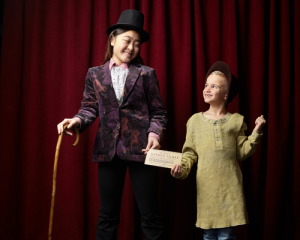
All the time at home may create some separation anxiety issues for pets in the future.
We’ve been spending a lot of time at home. And for pet owners that also means more time with our pets — a good thing. But this can also potentially lead to some distress down the line when we do start to head back to work and school.
“We are already seeing more symptoms of separation anxiety with our current clients as they begin to leave the home a little more,” said Orange County-area professional dog trainer Yo Armendariz, owner and founder of Canine Learning Academy (www.caninelearningacademy.com). “One of our clients went to the store for 15 minutes to find out her dog had jumped out of a second-story window and was found in her complex looking for her. Another went to get gas and has his dog in his truck with window open, he went inside to get a water and his dog had jumped out the window and was waiting for him when he came out of the store.”
But there are some things pet owners can do to help prevent potential anxiety once human family members start leaving the house again. She said puppyhood is a great time to start teaching alone time.
“When first bringing home your puppy you can begin with teaching your puppy to be alone,” she said. “It is not natural for a puppy to want to be alone, so with training you can help your puppy learn how to be alone.”
If your dog is past puppyhood, there are still things you can do.
• Mix things up in your routine. If you always grab your keys out of your purse and place your purse on your shoulder just as you’re about to walk out the door, stop doing this in exactly the same way.
• Randomly use all ‘departure cues’ with your dog so that he or she can’t associate them with your departure.
• Avoid giving attention to your dog when he follows you or your family around the house.
• Crate training is also useful. Confine your dog in his crate for 10 to 15 minutes once a day when your family is home. Crate time should be fun, not punishment, so it gives your dog something to look forward to when you leave.
• Associate your departure with something wonderful, like rare dog treats that he only gets at that time of day.
“Anxiety in pets may be mistaken for behavioral issues,” she said. “Telling signs of immediate distress among dogs include panting and drooling, which may increase as owners prepare to depart and be contrasted by great bursts of affection upon the owner’s return.”
She said a dog with separation anxiety typically has at least two of these behaviors:
- Panting when left alone
- Pacing when left alone
- Not eating when left alone
- Inability to rest
- Decreased activity
- Escape attempts
- Self-harming behavior like excessive chewing
- Excessive drooling
- Denning (withdrawing into a den-like space)
- Destructive behavior like chewing on furniture
- Excessive vocality like whining or barking
- Inappropriate elimination like urinating in the home
- Shadowing you when you’re home
- Distress at your departure rituals
- Excessively greeting when you arrive back home
Armendariz said if separation anxiety is diagnosed, options include not leaving pets alone at all, hiring a good dog walker or finding a daycare for your dog. Other options include managing the problem through crate time when you do leave, distracting your dog when you leave and training through the problem (the most challenging option).
“These are unprecedented times,” she said. “We need to work extra hard to manage our emotions well. Expect to have a lot of mixed feelings. There are so many things people can do to help reduce stress and anxiety for their dogs through all this. To start, stick to your dog’s routine. Most dogs are used to having the whole house to themselves so they can nap and rest all day until their owners get home from work. Many dogs require a regular feeding and exercise schedule. Having a consistent routine keeps an animal balanced and calm, and it can work for people, too.”
By Jessica Peralta
(Photo courtesy of Mia Anderson/Unsplash)











Leave a Reply